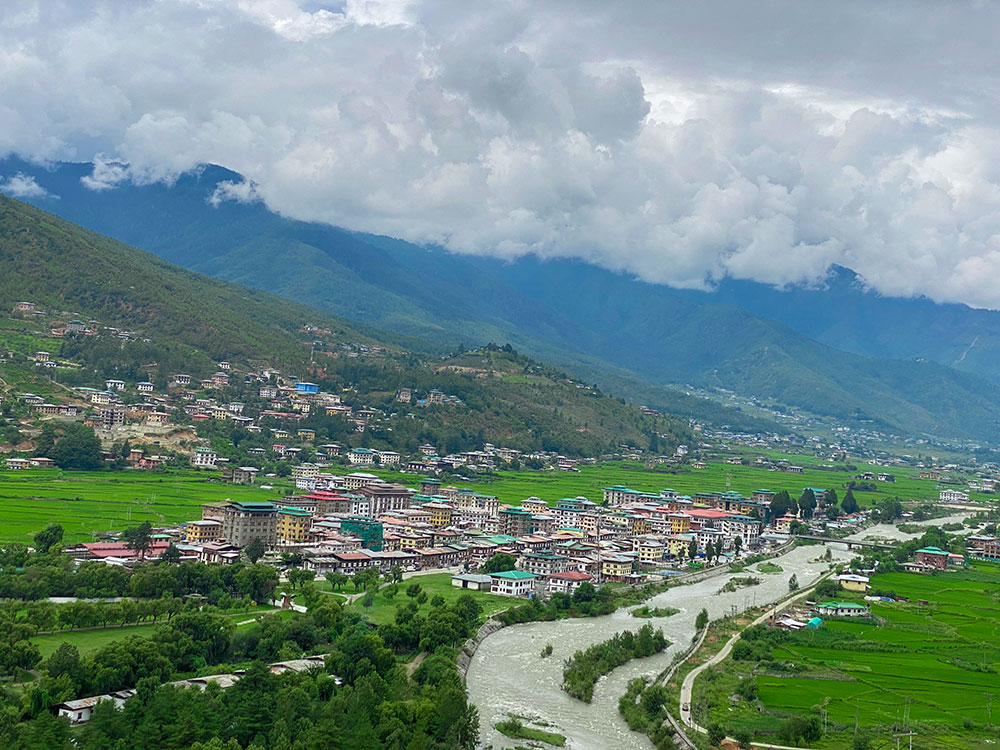Phub Dem | Paro
Paro, the widest valley in the country, is called the valley of gold because of rich paddy cultivation. But change is coming quickly to Paro.
The dzongkhag has embarked on fast-paced developmental activities that are transforming the landscapes and the lives of the residents.
Concrete buildings are encroaching the virgin hills and forests. The chuzhings (paddy fields) along Tshongdue town are gradually filling up with permanent structures.
A few decades ago, temples, monasteries, choetens were a landmark for residents and travellers.
Yeshi from Tsento recalls Tshongdue as a hamlet where locals traded goods and services. Within a fleeting moment, she saw the small-town giving way to a crowded throm. “There used to be a stream in Tshongdue where our parents helped us cross it. I cannot locate it anymore.”
While locals embrace the facilities and comfort brought by the development, she said that the valley is losing a part of its essence. “Tall buildings have replaced the scenic view of temples and mountains. It is not the same anymore.”
Another resident from Chang Dungkar, who was working on a leased paddy field below the airport watchtower, shared her concern over the impact of rapid urbanisation in Paro.
She lost acres of her family’s paddy field to Paro International airport. She remembers growing rice along the airstrip before it became an airport in 1981. “We used to run away from our fields during landing and takeoffs and had to work at other times.”
She said that developmental activities are displacing settlements and that she is worried about losing the fields and traditional houses to airport expansion projects.
She said: “It won’t be long before Paro becomes another Thimphu, losing its wetlands to development.”
Paro municipal office issued 28 building construction approvals from 2018 to May last year. The dzongkhag engineering section recorded increasing construction approval from 42 in 2018 to 93 in 2019, and 82 last year.
The dzongkhag approved 26 new buildings this year.
According to a source, there is no space for new construction in the throm as every space is occupied.
With lack of space in the municipality, new buildings are mushrooming in nearby satellite towns such as Jitisiphu, Lamgong, Bonday and adjacent areas like Geptay.
An official with the municipality said that office was working on a Local Area Plan for Geptay.
Jamtsho from Lamgong said that new houses in his village had doubled to 100 in no time.
Had it not been for the restriction and Paro valley Development plan, he said the dzongkhag would have lost all its paddy fields. “If we lose our rice fields, we don’t have anything to depend on. Rental income is minimal in Paro.”
Rapid urbanisation and ever-increasing demand for infrastructure development are pushing agriculture or food production to the backseat.
In the last three years, the agriculture office in Paro received around 500 applications to convert wetland to dry. In the same year, close to 12 acres of paddy fields were lost to wetland conversion.
According to agriculture officer, Tandin, locals were buying wetlands to convert them to residential in case the local area plan comes in.
He said that there were high chances of losing wetlands to developmental activities. “We consider only limited and genuine conversion.”
If the conversion increases, Tandin said that the agriculture office’s food self-sufficiency target would be impacted as Paro is considered the rice bowl of the west.
More important, rapid urban growth has created pressure on services such as water, sanitation and waste.
Edited by Jigme Wangchuk


